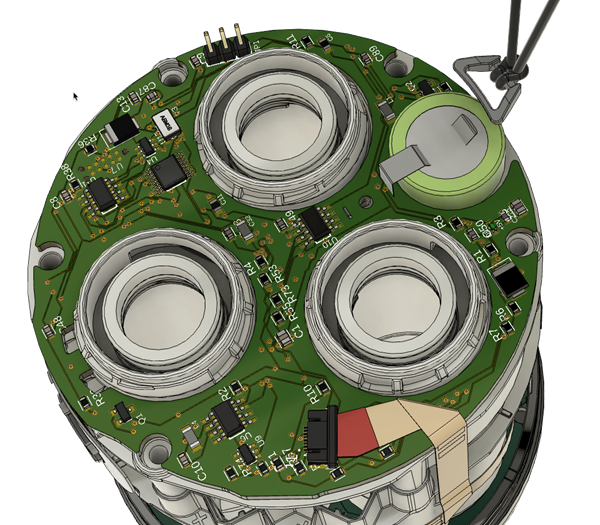Elevate your design and manufacturing processes with Autodesk Fusion
MCAD – Mechanical computer-aided design and ECAD – electronic computer-aided design, when combined together, can help streamline crucial development processes. Continue reading to learn how.

Mechanical computer-aided design (MCAD) and electronic computer-aided design (ECAD) are essential components in modern end-to-end product development. As devices become smarter, it’s crucial to find inventive ways of cramming components into shrinking systems. Additionally, engineers must squeeze every ounce of performance out of their designs. With MCAD and ECAD, it is easy to ensure both form and function are seamlessly aligned.
That being said, these essential software tools are typically not integrated correctly, causing disruptions and efficiency disasters downstream, when it is most expensive. Fusion 360 provides a genuinely unified approach to both ECAM and MCAD design workflows. Putting both of these desperate design domains in one integrated environment and making your ECAD data that exact same dataset as your MCAD data. There is never a hand-off or file exchange formats (STEP, IGES, IDF, etc.).
How does MCAD work?
MCAD software is ideal for previewing various design iterations, including assessing form factors and fitment of certain physical elements. These 2D and 3D design schematics change dramatically between different products. With MCAD, an excellent visual reference when testing for structural harmony is right at your fingertips. These designs produce documentation automatically, so engineering teams have the freedom to annotate as needed.
Say you are producing products with numerous moving parts and individual components. General guidelines determine how a design should come together. The ability to perform digital, the piece-by-piece assembly can immediately reveal design flaws. Fusion 360, in particular, lets teams run simulations to confirm mechanical integrity.
MCAD should encompass some combination of CAD, CAM, and CAE, providing well-roundedness and rich functionality. Many companies fragment these services, making users feverishly bounce between windows, and thus hindering productivity.

How Does ECAD Work?
ECAD is a specialized software workflow centered on electronics design, mainly targeting PCBs. These electrical components are the lifeblood of your mechanical design and often require special attention. ECAD programs commonly include schematic editors, layout editors, and component libraries with crucial design assets, which teams can use to piece together intricate PCB designs. Since design accuracy is absolutely essential, these suites are as finely tunable as they come.
Fully-featured ECAD programs should integrate with their MCAD counterparts, which is why choosing a single solution can offer numerous quality-of-life features. The MCAD and ECAD suite utilizes a unified data format, ditching exchange format dependencies.
ECAD software includes targeted features that aren’t found elsewhere, allowing you to experiment with multiple or stacked boards when creating PCB layouts. Engineers can also perform trace routing, a 2D/3D process that examines how are arranged between different PCB layers. Signals in your logical schematic determine how different components connect together. ECAD is also useful for checking thermal performance, checking for enclosure issues, and ensuring PCBs comply with mandated standards.
ECAD & MCAD: Beyond Seemless Integration
The working day is too short to surrender hours of productivity. With the Fusion 360 Electronics Workspace, you will be unifying MCAD & ECAD workflows like never before allowing you to streamline crucial development processes and cut the time spent doing non-value-added activities. You should try it yourself; this will change your mind about design and your dependencies around ECAD & MCAD workflows.
